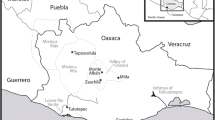Abstract
The possible use of lost-wax casting in China has long been a matter of controversy. Based on the study of pertinent ancient texts concerning the technical origins of lost-wax casting in China, direct examination of questioned ancient Chinese bronzes as well as definite lost-wax castings from both overseas and China, and modern production of objects using piece-mold casting, the authors point out their own conceptual ideas about ancient lost-wax casting as follows. First, the lost-wax casting technique does not have its earliest origins in ancient China but rather from the Sumerians in Mesopotamia, where it was predominantly used to cast small human and animal figures (statuettes). Next, some essential characteristics of the lost-wax casting technique can be identified from the point of view of a distortable soft starting model. The locally deformed shape of lost-wax castings is found to be variable. Finally, it is improper to consider the ease of extraction from the mold as the criterion for distinguishing lost-wax casting from piece-mold casting. It is therefore incorrect to conclude that the three-dimensional openwork decorations present on Chinese bronzes from the Spring and Autumn Period, and the Warring States Period, are fabricated using lost-wax castings.










Similar content being viewed by others
References
B.L. Simpson, Devolopment of the Metal Castings Industry (Chicago, IL: American Foundrymen’s Association, 1948), p. 27.
E. Maryon and H.J. Plenderleith, A History of Technology, Vol. I, ed. C. Singer, E.J. Holmyard, and A.B. Hall (Oxford: Oxford University Press, 1954), p. 628.
Leslie Aitchison, A History of Metals, Vol. I (New York: Interscience Publishers, 1960), p. 165.
W. Zhou, Y. Dong, Q. Wan, and C. Wang, China Cultural Relics Newspaper (July 21, 2006).
W. Zhou, South. Cult. Relics 2 (2007).
W. Zhou, South. Cult. Relics 3 (2008).
T. Jacobsen, The Treasures of Darkness: A History of Mesopotamian Religion (New Haven: Yale University Press, 1976).
H. Frankfort, The Birth of Civilization in the Near East (Garden City, NY: Doubleday, 1956).
L.S.S Tavrianos, Global History—The World To 1500 (Prentice-Hall, Inc., Englewood Cliffs, NJ. 1982), pp. 118–125. Translated by X. Wu and C. Liang (Shanghai Academy of Social Science Press, Shanghai, 1999).
L.B. Hunt, Gold Bull. 13, 63 (1980).
P.R.S. Moorey, Materials and Manufacture in Ancient Mesopotamia (Oxford: British Archaeological Reports, 1985), p. 41.
Joseph Veach Noble, Am. J. Archaeol. 10, 368 (1975).
Christine Alexander, Metrop. Mus. Art Bull. 10, 205 (1941).
J. Christopher, Davey, “Tell Edh-Dhiba’I and the Southern Eastern Metalworking Tradition”, The Beginning of the Use of Metals and Alloys, ed. R. Maddin (Cambridge, MA: The MIT Press, 1988), p. 65.
Carol C. Mattusch, Bull. Met. Mus. 14, 27 (1989).
Weirong Zhou, South. Cult. Relics 4, 101 (2009).
J. Hua, Proceedings of the 3rd Internatioonal Conference Bronze Civilization and Archaeometry (2008), pp. 55–60.
De Rui Tan, The Cultural Study for Ancient Bronze (Issue 5) (Huangshan: Huang Shan Book Press, 2007), p. 118.
H. Chen and G. Xu, Proceedings 3rd Int’l. Conf. Bronze Civilization and Archaeometry (2008), pp. 66–81.
L.B. Hunt, Gold Bulletin 13, 63 (1980).
De Rui Tan, A Brilliant Achievement of Ancient Chinese Lost-Wax Casting (Shang Hai: Science and Technology Press, 1989), p. 15.
Wei Qian, Weijun He, and Honggang Liang, Sci. Res. Chin. Cult. Relics 2, 66 (2008).
Xiating Li, Ziming Liang, and Rogert Bagley, eds., Art of The Houma Foundry: Institute of Archaeology of Shanxi Province (Princeton, NJ: Princeton University Press, 1996).
Jinchao Wang, Southeast Cult. 1, 70 (2002).
Jinchao Wang and Wei Wang, Disquisitions Past Present Taiwan 26, 3 (2014).
Juemin Hua and Huifang Xiao, “The Known Earliest Lost-Wax Casting Yu Vessel of King Chu State and the Technical Evolvement of Lost-Wax Technology”, the cultural study for Ancient Bronze (issue 4) (Beijing: Huang Shan Book Press, 2005), p. 80.
Chinese Cultural Relics Newspaper, April 11, 2014, plate 6.
Weirong Zhou and Wei Huang, J. Natl. Mus. China 1, 147 (2015).
Acknowledgement
We would like to thank Prof. Michael Notis very much for his great help with the English version of this paper.
Author information
Authors and Affiliations
Corresponding author
Rights and permissions
About this article
Cite this article
Zhou, W., Huang, W. Lost-Wax Casting in Ancient China: New Discussion on Old Debates. JOM 67, 1629–1636 (2015). https://doi.org/10.1007/s11837-015-1462-0
Received:
Accepted:
Published:
Issue Date:
DOI: https://doi.org/10.1007/s11837-015-1462-0




